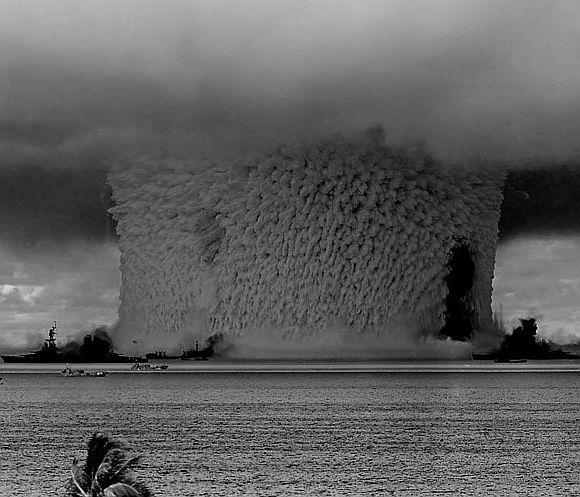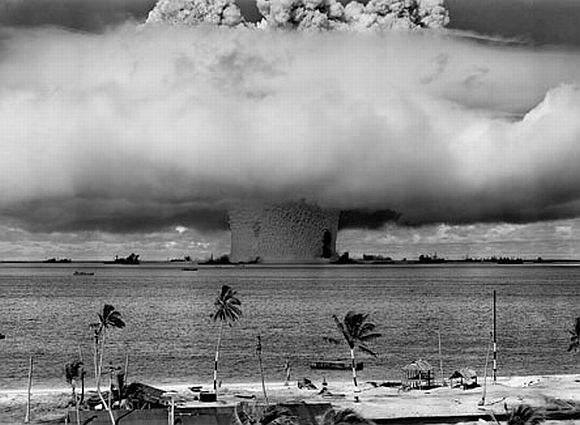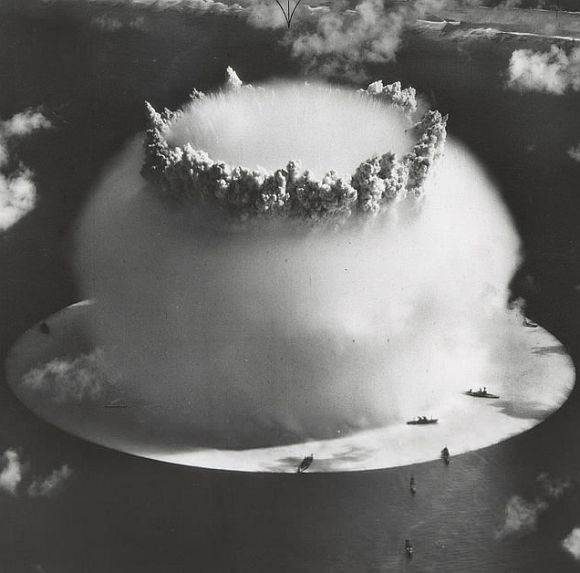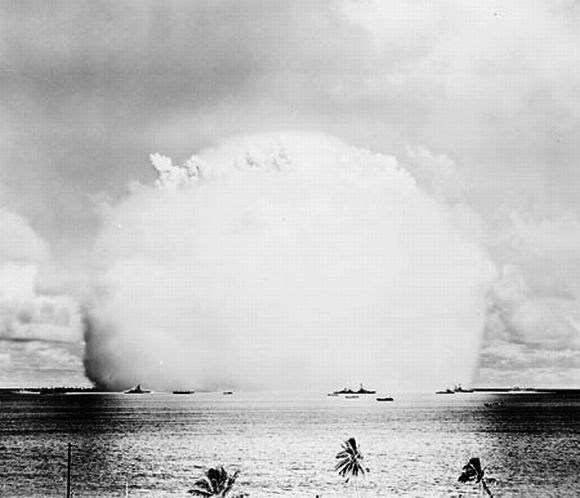The atoll of Bikini, a necklace of 23 islands located on the northern fringe of the Marshall Islands, was once popular for its sandy beaches and swaying palms that surrounded a tranquil, blue-green lagoon.
Then came the mushroom clouds that wiped out the landscape.
In 1946, the United States conducted a series of nuclear weapon tests at Bikini Atoll in what is known as Operation Crossroads.
A total of two bombs were detonated to test the effects nuclear blasts had on naval warships. The second, named Baker, was the world's first nuclear bomb to be detonated underwater.
Due to the unique properties of underwater explosions, the Baker test produced a number of unique photographs that the world had never seen before.
Click on NEXT to see the PHOTOS...
Pix of world's first underwater N-test
The Wikipedia page on the Baker test states that the underwater fireball took the form of a rapidly expanding hot "gas bubble" that pushed against the water, generating a supersonic hydraulic shock wave which crushed the hulls of nearby ships as it spread out.
Eventually it slowed to the speed of sound in water, which is one mile per second, five times faster than that of sound in air.
On the surface, the shock wave was visible as the leading edge of a rapidly expanding ring of dark water, called the "slick" for its resemblance to an oil slick. Close behind the slick was a visually more dramatic, but less destructive whitening of the water surface called the "crack."
Click on NEXT to see more...
Pix of world's first underwater N-test
When the gas bubble's diameter equaled the water depth, 180 feet, it hit the sea floor and the sea surface simultaneously. At the bottom, it started digging a shallow crater, ultimately 30 feet deep and 2,000 feet wide.
At the top, it pushed the water above it into a "spray dome," which burst through the surface like a geyser. Elapsed time since detonation was four milliseconds.
During the first full second, the expanding bubble removed all the water within a 500-foot radius and lifted two million tons of spray and seabed sand into the air. As the bubble rose at 2,500 feet per second, it stretched the spray dome into a hollow cylinder or chimney of spray called the "column," 6,000 feet tall, 2,000 feet wide, and with walls 300 feet thick.
...
Pix of world's first underwater N-test
As soon as the bubble reached the air, it started a supersonic atmospheric shock wave which, like the crack, was more visually dramatic than destructive.
Brief low pressure behind the shock wave caused instant fog which shrouded the developing column in a "Wilson cloud", also called a "condensation cloud", obscuring it from view for two seconds.
The Wilson cloud started out hemispherical, expanded into a disk which lifted from the water revealing the fully developed spray column, then expanded into a doughnut and vanished. The Able shot also produced a Wilson cloud, but heat from the fireball dried it out more quickly.
Click on NEXT to go further...
Pix of world's first underwater N-test
By the time the Wilson cloud vanished, the top of the column had become a "cauliflower," and all the spray in the column and its cauliflower was moving down, back into the lagoon. Although cloudlike in shape, the cauliflower was more like the top of a geyser where water stops moving up and starts to fall. There was no mushroom cloud; nothing rose into the stratosphere.
Twelve seconds after detonation, falling water from the column started to create a 900-foot tall "base surge" resembling the mist at the bottom of a large waterfall. Unlike the water wave, the base surge rolled over rather than under the ships.
Of all the bomb's effects, the base surge had the greatest consequence for most of the target ships, because it painted them with radioactivity that could not be removed






article